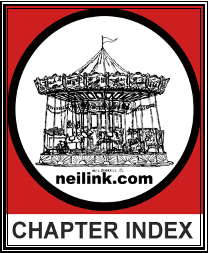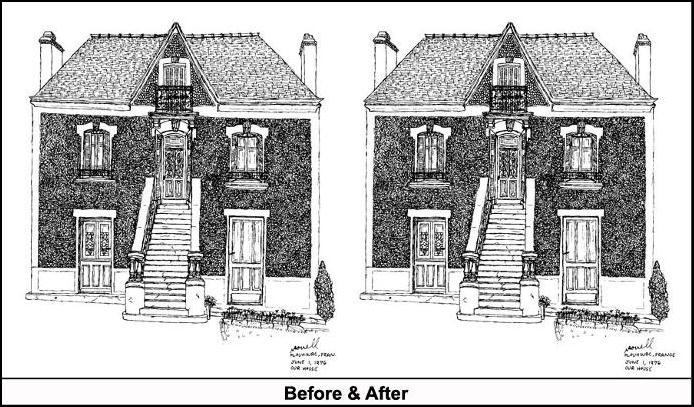|
Fishermanís House Plouhinec, France 1976 |
|
Welcome to Chapter 59 of neilink.†
Hereís another old drawing that Iíve made new changes to.†
This drawing first appeared as the backstory entry to Chapter 19 but I like it better now than I did then.
Neil Borrell††††††††
neil@borrellcompany.com |

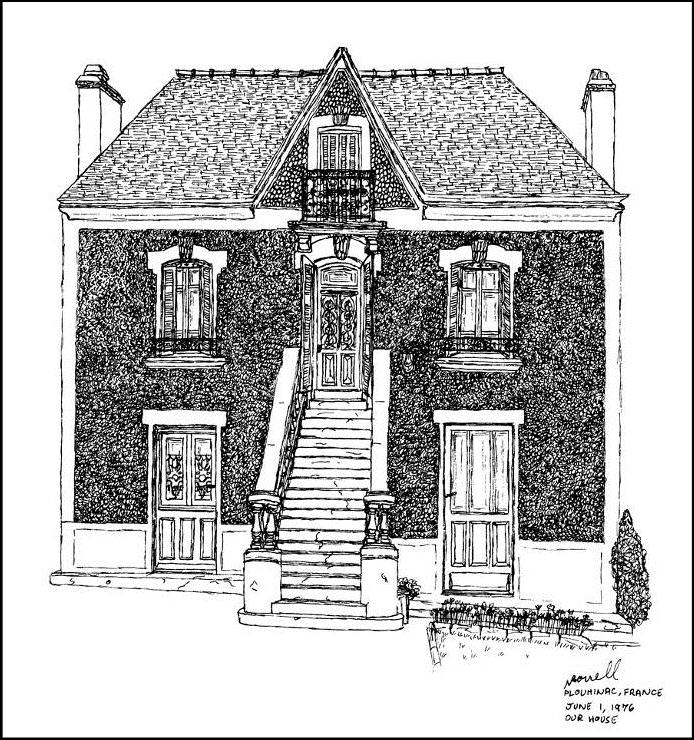
|
Every month when Iím trying to pick a drawing to include here I pull out all my original drawings and go through them. Iíve used a lot of them in this book so I always start out thinking there just isnít anything left other than new drawings. When I came across this one I remembered a number of things that I didnít like at the time. I know that all the lines are perfect only in a photograph but I was unhappy about the roof right away. I work in ink so thereís no going back. I have this diary in my head which is full of things that I wanted to do a little differently in a lot of my drawings. The original of this drawing is below. I think Iíve taken care of my corrections in the version above. Iím not so sure that anyone would notice some of these things but itís very satisfying to see what a drawing would look like with changes I wanted to make, in this case, 35 years ago. |
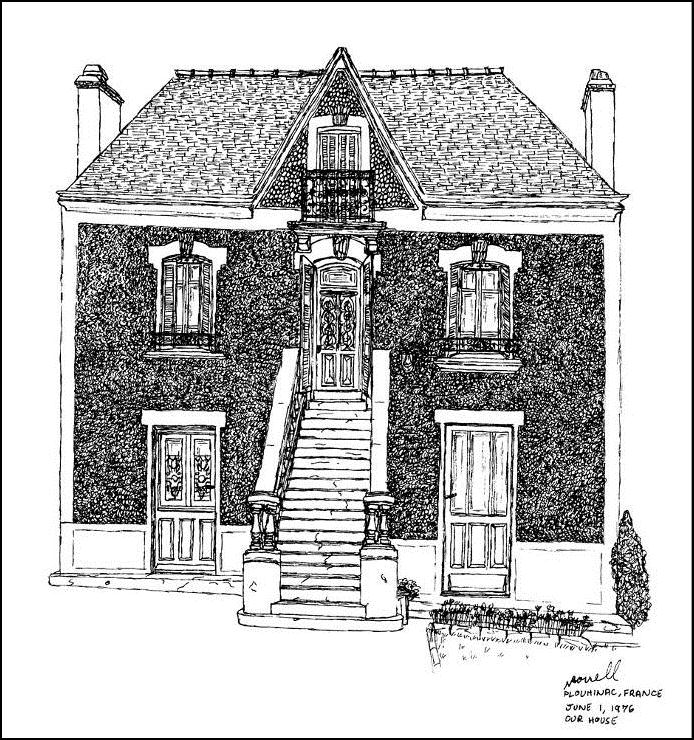
|
Before the Internet, when we wanted to rent a place in France we would write to a service that was registered with the French government and tell them where we were interested in renting and what our price range was. After a while we would start getting listings, usually on flimsy air mail paper, sometimes with pictures, and pick a rental. We learned early on that if something was described but not pictured it wouldnít be anything like the description. As usual some of the rentals left a little to be desired at first but I donít think we left any of them unhappy.
We always refer to this house as being in Etel, a riverside town in Brittany. The house is actually in Plouhinec on the other side of the river, even though I misspelled it when I signed the drawing. On our first day there we went to lunch at a seafood restaurant on the townís main street and Gerry ordered a mixed shellfish platter. It looked beautiful but in among the many different clams and oysters were tiny little cockles and winkles. We couldnít figure out how to get the meat out and tried, unsuccessfully, to smash one open. We had noticed that there was a straight pin stuck in a cork on the table and finally put it all together. The pin was there to get the meat out of the winkles.
The side of the house that faced the road was blank, I donít remember even a window on that side. All of the things you would expect to be on the front of the house were on the back, including a grand staircase. The rental consisted of the first two floors on the right side of the drawing. The rest of the house was locked up.
Just inside our door was the kitchen and a curtained off bathroom. The bathroom sink was one of those with a compact water heater at eye level above the sink. The pilot light was exposed behind an opening at the bottom. When you turned on the hot water tap there was a loud whoosh and the flames shot up inside the heater. I think it made me jump every time I used the sink.
The houses on either side belonged to fishermen who were related to one another. They went out on very long deep sea fishing jobs. Their houses were extremely nicely furnished so I guessed they must have done well tuna fishing.
There were two little girls on one side. They and Amy got rather friendly and they played together often. Sylvie and Katrie didnít speak English and Amy didnít speak French but they got along really well. It helped that Gerry speaks French.
|
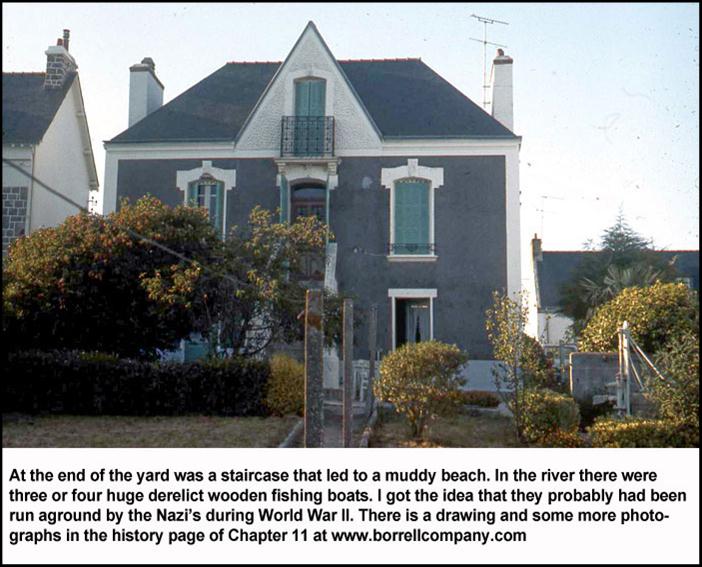

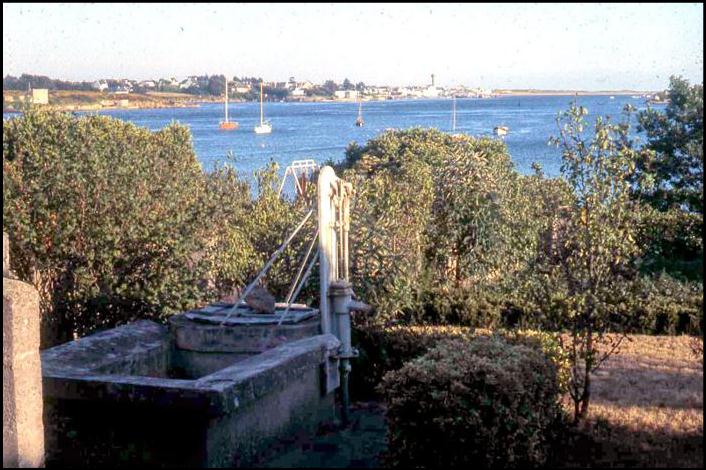
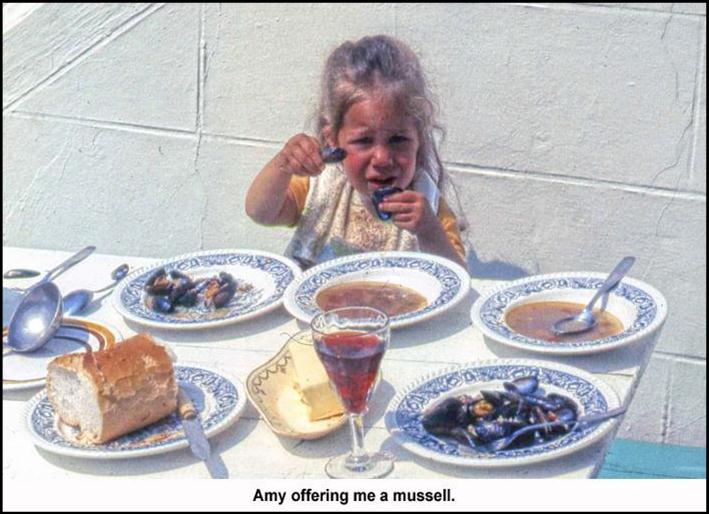
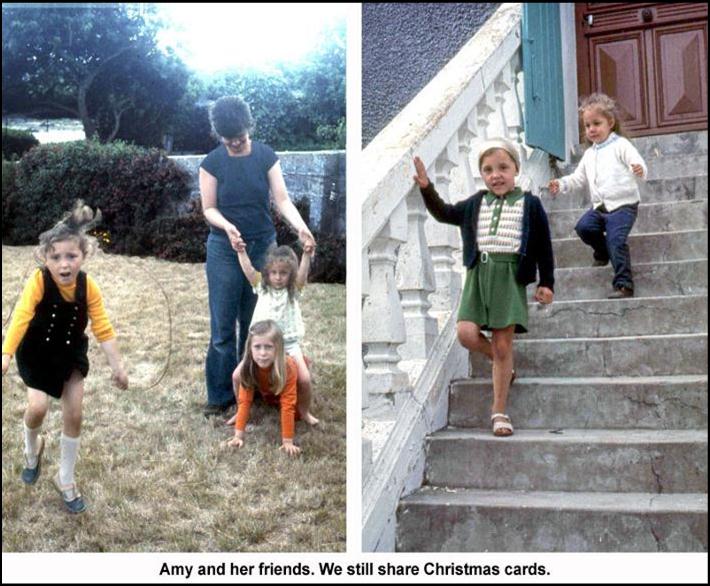



|
All material copyright 2011 Neil Borrell |
